On January 9, negotiators from Seoul and Pyongyang began discussions about reducing tensions on the Korean Peninsula, with the possibility of improving inter-Korea relations. The central point of discussion is to figure out a mutually acceptable way to have North Korean athletes join the global community at the upcoming winter Olympic Games in Pyeongchang, South Korea.
But even before the dialogue began, the inter-Korean talks were burdened with expectations that were simultaneously too high and too low.
Some critics condemn the dialogue as nothing but a North Korean “‘booby trap’ to extract concessions” from Seoul, while others hope that the opening is a genuine olive branch that will pave the way for de-escalation of military tensions and the eventual denuclearization of North Korea. Both are off target. Some good can come out of this opening, but denuclearization itself is so far off in the distance as to be a fantasy. This week’s talks are baby steps, and the world should encourage the two Koreas to get their toes wet and check out the temperature, rather than commanding how or where they should swim.
Be real
The most important thing is for Seoul to establish its own realistic expectations, and I would argue that they should be set low. Seoul should focus on issues that facilitate continued dialogue over a long time span—rather than hurried deliverables that may inflate expectations, only to watch diplomatic openings come to an abrupt close. Over time, the scope of the agenda can expand and deepen, but nuclear issues should be kept off the table for some time, until confidence-building measures might see progress and the threat of conventional weapons might decrease. Also, Seoul should focus on the things that the North considers important, without undermining existing international sanctions.
This week’s talks are baby steps.
It is clear that for Seoul, immediate gratification—the smooth execution of Pyeongchang games—looms high as both a motivator and goal of dialogue with Pyongyang. But South Koreans should keep their aspirations modest to protect themselves from unnecessary complications and to make North Korean cooperation as simple as possible. For example, Seoul would like Pyongyang’s agreement to have a joint entrance (as the two have done at nine major sporting events since the 2000 Sydney Olympics) under a common flag at the opening ceremony. It also hopes the North will agree to field unified teams in select Olympic events. But the current situation is merely an ice-breaker to test out the possibilities for educing tensions. Cooperation on all issues has stalled since the severe deterioration of inter-Korean relations in 2008 and the cessation of Six-Party Talks around the same time. In 2000, the two Koreas were basking in the warmth of the Sunshine Policy, and Kim Jong-il and Kim Dae-jung had officially launched a near-decade of various cooperation schemes. Today, Kim Jong-un holds the threat of nuclear weapons over the heads of South Koreans. Participating in the Olympics as two separate teams representing two separate states reflects reality and raises no unnecessary symbolism and emotions of a unification that is out of reach for some time.
So many problems could arise during the Pyeongchang games (February 9 to 26), even if North Korean athletes participate, and Pyongyang could blame Seoul at any point and exit abruptly or make public condemnations if things don’t go their way. For example, as much as the South Korean delegation would like to see a joint-Korean “national” cheering squad, South Korea’s democracy also guarantees that critics of the Pyongyang regime might likely utter anti-North Korea (or DPRK) sentiments and/or hold up anti-DPRK posters for the global media to capture, which North Koreans would condemn. There is also the possibility that North Koreans could dispute and decry the decisions of international referees, something South Koreans did aggressively when their country’s speed skater Kim Dong-sung lost the gold medal to the American Apollo Ohno at the 2002 Winter Olympics in Salt Lake City. De-linking the North from the South in pursuing athletic excellence would be the fairest way to treat all participating athletes and to respect their sport, as well as prevent the politicization of numerous competitions that will take place for nearly three weeks.
The realm of the achievable
If the North Koreans do participate and the winter games end with no glitches, Seoul should stick to the traditional issues that have become the “rice and kimchi” of inter-Korean relations for the last several decades: family reunions; regular communication channels; military-to-military meetings to prevent military accidents, misunderstandings, and adventurism; and people-to-people exchanges in humanitarian, educational, and artistic arenas. Fortunately, on January 3, Pyongyang reinstated the inter-Korean hotline (telephone), which the North had discontinued since February 2016 after Seoul decided to close the joint industrial complex at Kaesong. This is the one official form of communication that had been in use twice daily (9 a.m. and 4 p.m.) by the two hostile states. The challenge for both sides is to keep it functioning through the good times and the bad. Regular meetings by the two militaries also should be a priority so that individuals can exchange information, build trust, and be accountable for mishaps in the demilitarized zone (DMZ).
One of the most important agenda items for Seoul is the resumption of reunions for families divided by the Korean War. Out of the 130,409 people who registered for reunions since the official system began in 1988, only about 60,000 are alive today. The vast majority are in their 70s or older. South Korean officials should impress upon their Northern counterparts that if Pyongyang is serious about reunification, as Kim Jong-un and his predecessors have repeated over decades, unification of family members must be the first step. The last reunions were held in 2015 and have been severely reduced under Kim Jong-un’s watch compared to that of his father, Kim Jong-il.
Both Koreas can also focus their cooperative energies on people-to-people exchanges as confidence-building measures and as a way for the Pyongyang leadership to pursue modernization and development in economic and cultural fields. Kim Jong-un’s recent New Year’s Day address repeats his desire for 2018 to be a year of economic modernization and “improving the people’s standard of living,” something not stated explicitly in his 2017 speech. He specified a focus on: the revamping of light industries that can “produce and supply more diversified and quality consumer goods,” the modernization of agriculture to “boost the production of livestock products, fruits, greenhouse vegetables,” and advancing more scientific “fishing campaigns, and reenergiz[ing] aquatic farming.” He also specified the second phase of reforestation and the improvement of roads and riverways—as he did last year—but this time it’s followed by the explicit command for the nation “to create a greater amount of material wealth.”
South Korea certainly has the skills base to offer technical (not commercial) assistance, either alone or possibly with China, Japan, Australia, other Asian neighbors, and appropriate United Nations agencies. The point of this would be to keep dialogue going and to test whether the Kim regime is serious about the economic side of its hallmark policy, byungjin (“parallel progress” in military/nuclear and economic conditions), which it emphasizes at home.
Of course, technical and educational assistance through people-to-people-exchanges would have to navigate the complex web of sanctions placed on North Korea. The legal question will be whether the knowledge assistance and human interactions benefit primarily the people of North Korea or the regime and the nuclear program. In September 2017 during the heat of nuclear tensions on the peninsula, the Moon administration pledged $8 million humanitarian aid to North Korea through United Nations programs. So, that precedent to help the people of North Korea has already been set.
Finally, it’s unthinkable to imagine South Korea discussing the nuclear issue with North Korean counterparts on its own. A nuclear DPRK is a regional and international problem, too big and complex for the two Koreas to handle by themselves. But the two Koreas can discuss reductions in other weapons—including conventional arms and chemical and biological weapons—as a step toward securing stability and even peace on the peninsula. Currently, North Korea possesses 2,500 to 5,000 metric tons of chemical weapons, which can be deployed through conventional artillery and rockets, as well as biological weapons, including anthrax and smallpox.
If the two Koreas were up for hard work, there’s plenty to do even before the nuclear question can be posed. Let’s just hope they get through the next week and that Pyongyang agrees to show up in Pyeongchang as a good sport.
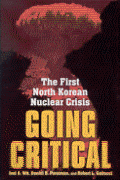
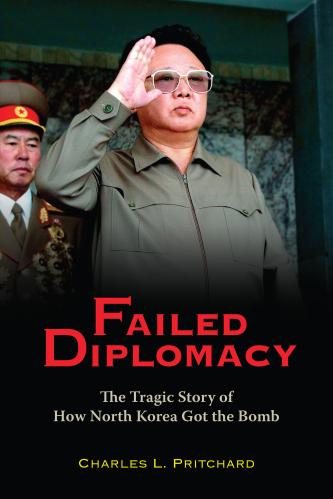
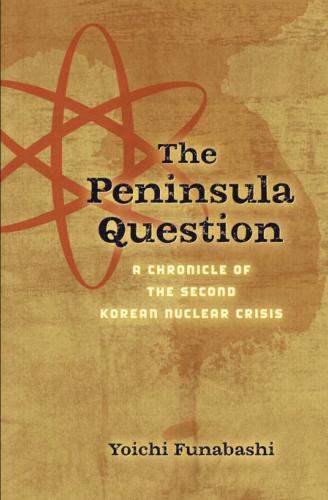
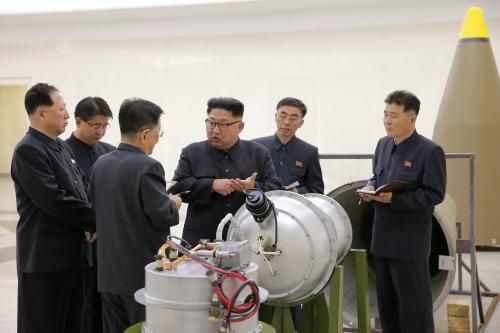
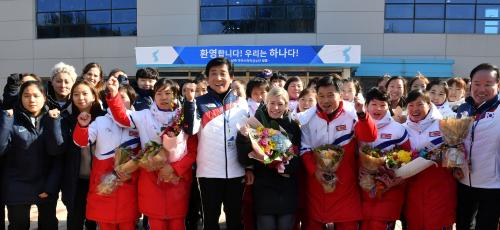
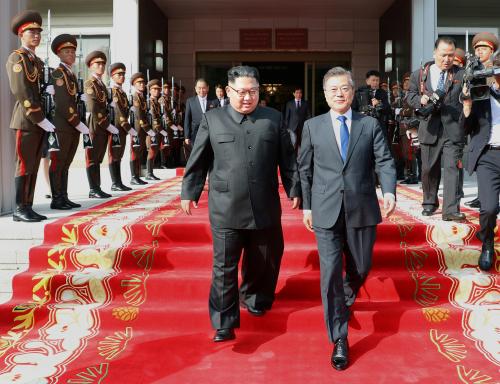
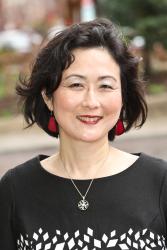
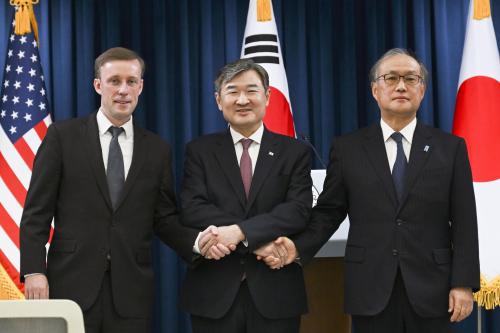
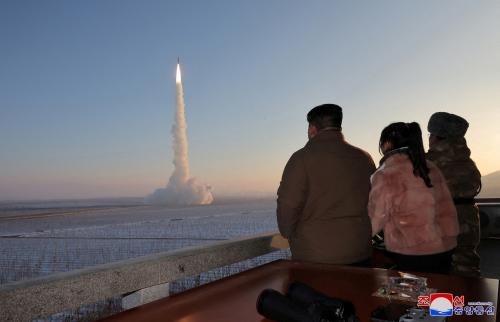
Commentary
Olympic dialogue: What’s realistic for the two Koreas?
January 9, 2018